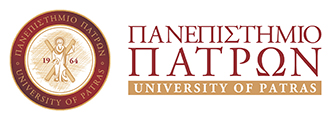Το τεκμήριο παρέχεται από τον φορέα :
 Πανεπιστήμιο Πατρών
Πανεπιστήμιο Πατρών
Αποθετήριο :
Πασιθέη - Ηλεκτρονικές επιστημονικές δημοσιεύσεις Ανοικτής Πρόσβασης

